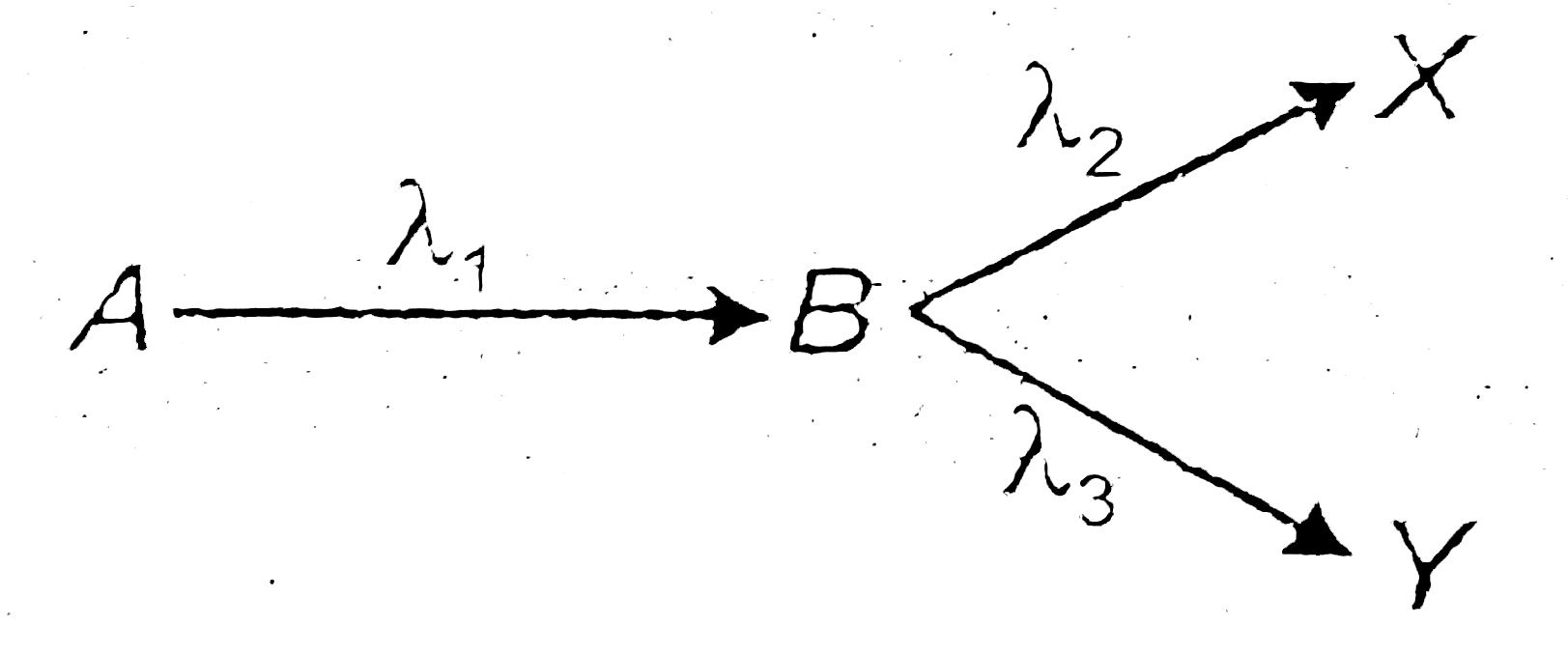A particular type of nucleus whose decay constant is λ is produced at a steady rate of p nuclei per second. Show that the number of nuclei N present t second after the production starts is N=Pλ[1−e~λt].
The instantaneous rate of growth of the nuclei is
dNdt=p−λN or dBp−λN=dt
On integrating,
−1λIn|p−λN|=t+c
At t=0, N=0⇒c=−In|p|λ
or −1λ[In|p−λN|−In|p|]=t or In∣∣∣1−λNp∣∣∣=−λt
or N=pλ[1−e−λt]
Topper's Solved these Questions
- MODERN PHYSICSBook:FIITJEEChapter:MODERN PHYSICSExercise:Illustration
Explore 10 Videos
- MODERN PHYSICSBook:FIITJEEChapter:MODERN PHYSICSExercise:Solved Problems
Explore 10 Videos
- MAGNETISM AND MATTERBook:FIITJEEChapter:MAGNETISM AND MATTERExercise:ASSIGNMENT PROBLEMS OBJECTIVE : (LEVEL -II) (MULTI CHOICE SINGLE CORRECT)
Explore 20 Videos
- OPTICSBook:FIITJEEChapter:OPTICSExercise:NUMERICAL BASED QUESTIONS
Explore 2 Videos
Similar Questions
From a radioactive substance n1 nuclei decay per second at an instant when total number of nuclei are n2. Find half-life of the radioactive substance.
View SolutionThe rate at which a particular decay process occurs in a radio sample, is proportional to the number of radio active nuclei present . If N is the number of radio active nuclei present at some instant, the rate of change of N is dNdt=−λN. Consider radioactive decay of A to B which may further decay either to X or to Y, λ1,λ2andλ3 are decay constants for A to B decay , B to X decay and B of Y decay respectively. if at t=0 number of nuclei of A,B , X and Y are N0,N0,zero and zero respectively

and N1,N2,N3,N4 are number of nuclei A,B , X and Y at any instant.
The number of nuclei of B will first increase then after a maximum value, it will decreases, if
View Solution
Knowledge Check
A radioactive substance with decay constant of 0.5s–1 is being produced at a constant rate of 50 nuclei per second. If there are no nuclei present initially, the time (in second) after which 25 nuclei will be present is
A1Bln 2Cln (4/3)D2 ln (4/3)A radioactive substance with decay constant of 0.5s−1 is being produced at a constant rate of 50 nuclei per second. If there are no nuclei present initially, the time in second) after which 25 nuclei will be present is
A1B2ln(43)Cln2Dln(43)A radioactive substance with decay constant of 0.5s−1 is being produced at a constant rate of 50 nuclei per second . If there are no nuclei present initially, the time (in second) after which 25 nuclei will be present is :
A1Bln 2Cln(4/3)D2 ln (4/3)
The rate at which a particular decay process occurs in a radio sample, is proportional to the number of radio active nuclei present . If N is the number of radio active nuclei present at some instant, the rate of change of N is dNdt=−λN. Consider radioactive decay of A to B which may further decay either to X or to Y, λ1,λ2andλ3 are decay constants for A to B decay , B to X decay and B of Y decay respectively. if at t=0 number of nuclei of A,B , X and Y are N0,N0,zero and zero respectively

and N1,N2,N3,N4 are number of nuclei A,B , X and Y at any instant.
At t=∞, which of the following is incorrect ?
View SolutionA radioactive nuclide is produced at the constant rate of n per second (say, by bombarding a target with neutrons). The expected number N of nuclei in existence t s after the number is N0 is given by
View SolutionThe rate at which a particular decay process occurs in a radio active sample, is proportional to the number of radio active nuclei present. If N is the number of radio active nuclei present at some instant, the rate of change of N is dNdt=−λN.
_E01_161_Q01.png)
Consider radioavtive decay of A to B which may further decay, either to X or to Y, λ1,λ2 and λ3 are decay constants for A to B decay, B to X decay and B of Y decay respectively. If at t=0 number of nuclei of A, B, X and Y are N0,N0, zero and zero respectively and N1,N2,N3,N4 are number of nuclei A,B,X and Y at any intant.
At t=∞, which of the following is incorrect ?
View SolutionA radioacitve nucleus is being produced at a constant rate α per second. Its decay constant is λ. If N0 are the number of nuclei at time t=0, then maximum number of nuceli possible are .
View SolutionA radioactive nucleus is being produced at a constant rate α per second. Its decay constant is λ. If N0 are the number of nuclei at time t=0, then maximum number of nuclei possible are.
View Solution

